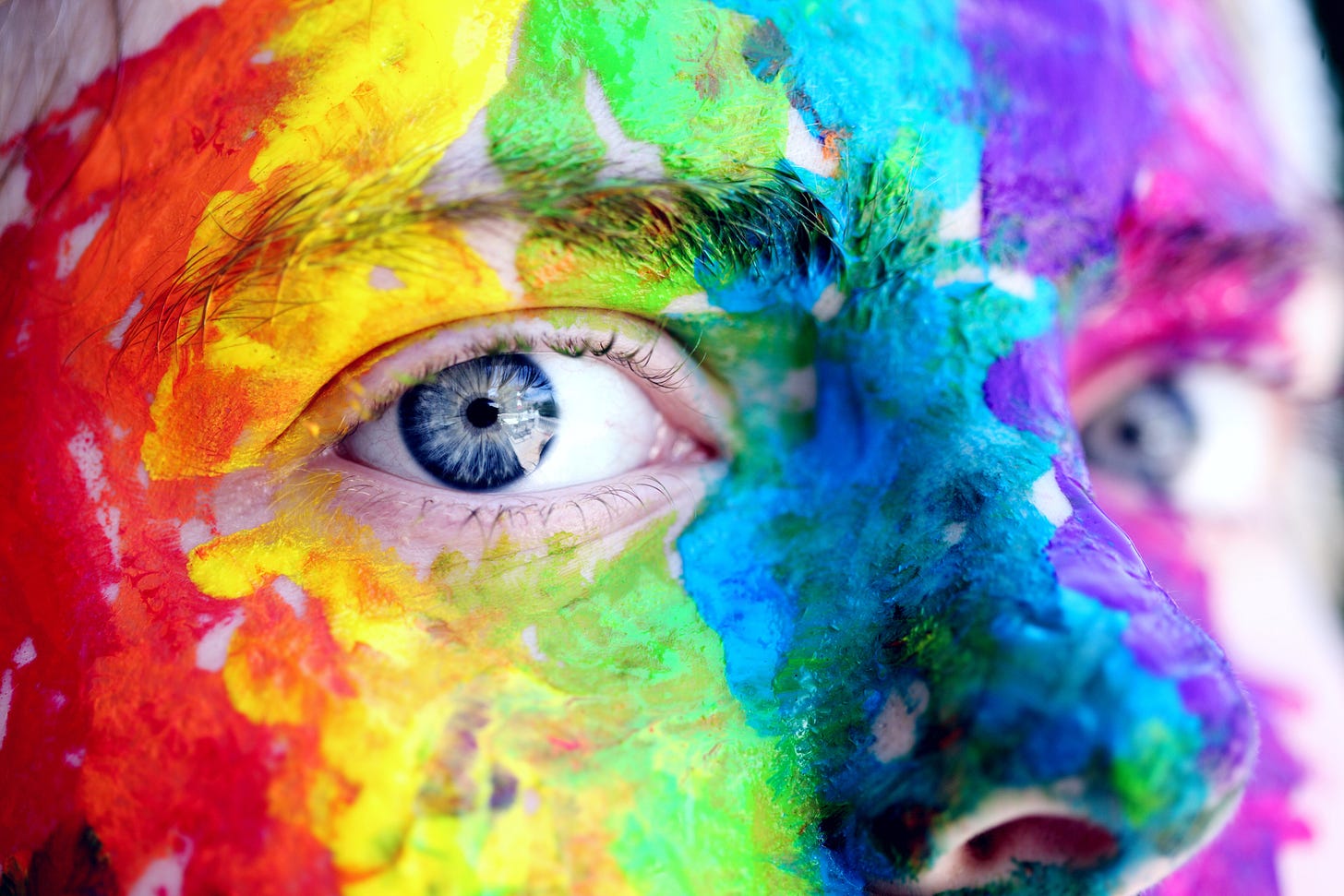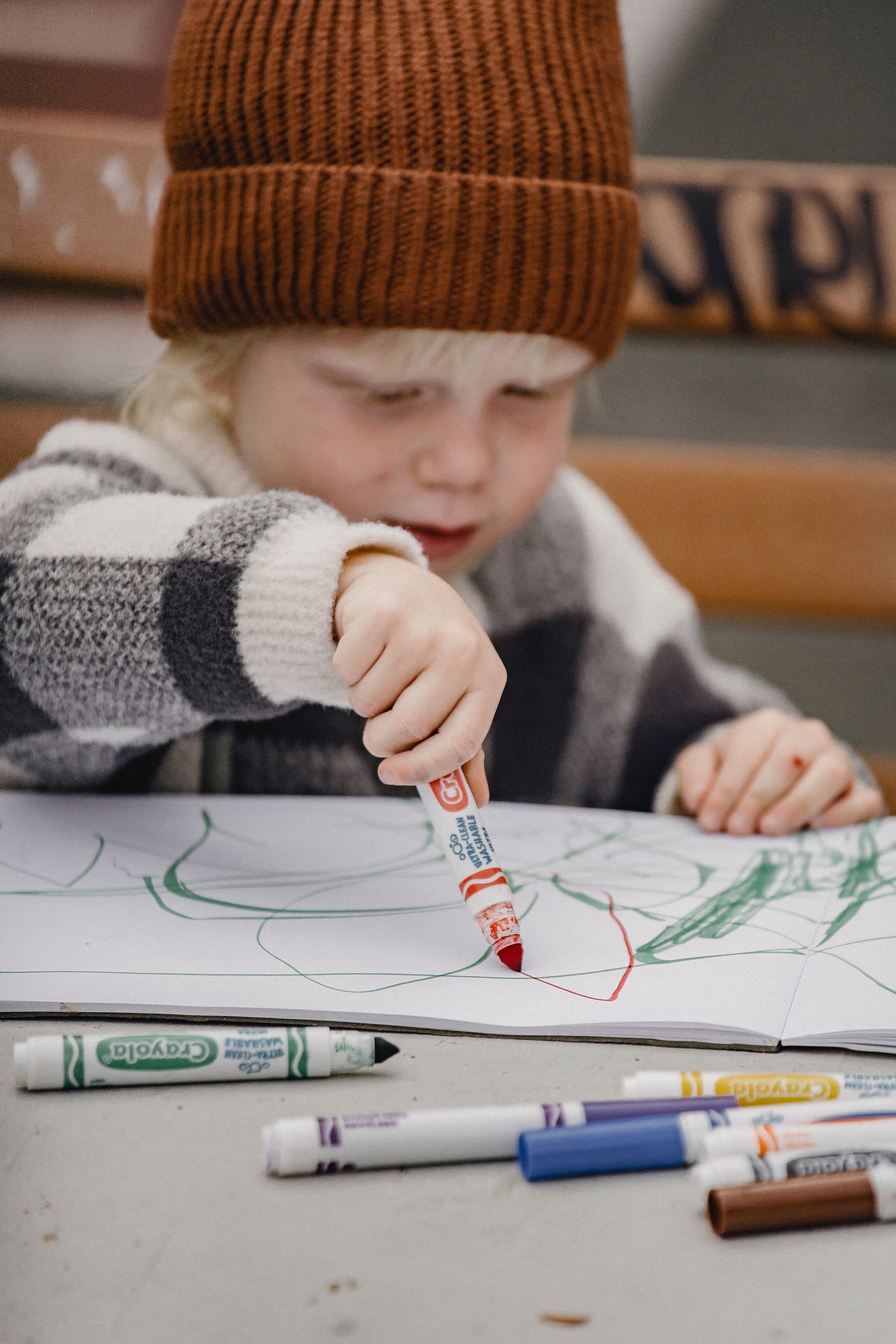To Art is Human?: Finding The Art in Humanity
Exploring the Creative Tapestry of Human Existence and Unveiling the Artistic Essence within Us All

Three hundred thousand years—the time modern man has spent on this big green earth.
In that time, we have achieved many daring feats: we’ve been to the moon and back, created the internet, battled the deadliest diseases, and “discovered and defined” new genders. Despite these remarkable achievements, our species has failed to give a standardized definition for the three-letter word art.
The irony of the dilemma lies in the fact that we have spent much of our time here creating, viewing, criticizing, and musing about various artworks. Since the earliest days of human civilization, art has always been a part of our existence. Of course, 40,000-year-old cave paintings would come to mind immediately. Most people consider them the oldest form of art in the world. Spoiler alert: they aren’t. Little Mobilary Objects are the oldest piece of art that survived from the yonder days. The oldest known example is the Blombos Cave figurine, a small, carved piece of ivory found in Blombos Cave, South Africa. It is dated to 73,000 years ago and is the oldest known example of a human figurine.

Based on these records, we can at least guess that we have possibly been making sophisticated art for about a hundred thousand years. In all that time, the proper meaning of what we have been doing seems to elude us 😂😂😂. Yes, we have shown deep intelligence in creating great art. Yet we have been inept at defining art. Please feel free to take some time and laugh at our ineptitude as a race.
Fact: The most basic things are the hardest to define. You can try a few basic words and see for yourself.
What’s So Difficult About a Three-Letter Word?
Let’s face the elephant in the room (or one of them). Why has art proven so excruciatingly difficult to define? We could explore many reasons, ranging from the arguments among philosophers to the claims of objectivity. However, the reason I choose to espouse here is the one I believe is the real problem: The ineptitude that hits humanity every time we are asked to define the most basic of things Words like love, life, time, joy, pain, etc. You have experience with each one, and you know them. All of that boldness vanishes the moment you have to define them. Art belongs in this category of words. This is the real reason for the dilemma and ineptitude. While we spend our lives engaging with art, we may never be able to define the term successfully. Or will we?
Making an attempt at The Word
I’m no Socrates or Aristotle. However, that doesn’t stop me from making the fool’s leap to stand where others might have failed. I’m going to try to define the word art. Before I get to it, I must mention that my definition might be the most foolish and boring one you might ever encounter. Nonetheless, I’ll put it out.
Choosing The Right Approach
Words that are difficult to define always have two things in common: complexity and diversity. These two reveal the multifaceted sides we find with all things of this nature, art included. One of the reasons this happens is a failure to identify parameters in the definition. As a result of this, philosophers would have a lot to disagree on. This is because everybody tries to define art based on part of the whole.
This reminds me of the proverbial story of the blind men who went to see what an elephant was like. Well, you should know the rest of the story: they spent their journey home arguing passionately about the “elephant epiphany” each of them had. Of course, each one of them was right about the part of the elephant he was describing while also being wrong about the same elephant. This is the fate we have suffered as a race trying to define art based on one aspect. The solution would be to identify the different parameters and unite them. Then we might finally get a chance to attempt a definition of art.
Defining The Parameters
When you say art, three parameters come to mind: the human, the process, and the result. While these three are interconnected, they are just like the different parts of the elephant. You can define each one individually and unite them to get a bigger picture. Today’s blog will tackle the first of these parameters, which is the human.
What In The Human Is Art?
Humanity has spent much of its existence romancing art. Seeing that is the case, it begs to ask if there is something in us that makes us love art, make it, view it, etc. So what about humanity is artistic? The answer to that question is tied to man’s existence and need to survive.

The first stage of human life is conception (sorry, guys, I’m pro-life). That instance, when nearly 100 million sperm cells are released, is the start of a quest for survival. The fastest swimmer wins the race to the fallopian tube and fertilizes the egg. That zygote grows fully into a baby and is born into this world. At birth, the human child encounters a different environment. This new world is different from the warm, protective enclosure of the mother’s womb. In that space, everything is provided, and there is no need to worry or stress. However, coming into this world for the first time, he meets a shock—the temperature change and the collapsing and expanding of the lungs for the first time all cause pain and discomfort. The newborn child learns his first lesson: there is a need to survive. That need for survival leads the child to his first act of expression: crying.
This is the child’s way of expressing himself and whatever quality of consciousness he has. This expression is aimed at doing only one thing: communicating. So the child cries to express self, communicating a need to survive. This isn’t a one-time thing, as the child cries and makes sounds to communicate his need over time. As the child grows, he becomes more articulate in gibberish. If you placed that child in a group of other children and left them alone, you would discover that there would be expression and communication.
With little passage of time, the development of motor skills kicks in. The child can express a broader range of coordinated motions with his body. At this stage, the child expresses himself through gestures and more defined facial expressions, adding a depth of meaning and emotion to the child’s expression and communication. Around this time, the child starts scribbling and drawing on the dirt. No other person but the child could understand what he was drawing.
While it is true that this was an experiment in perfecting the use of the limbs and other body parts, there is no denying that all of this is an expression of self and consciousness. Austin Kleon argues that everyone could draw as children in his book, Steal Like an Artist. Here’s an excerpt from the book:
Children draw without fear. They don’t worry about making mistakes. They just draw what they see. And that’s why their drawings are so fresh and alive. As adults, we’ve lost that childlike wonder. We’re afraid to make mistakes. We’re afraid to look foolish. But if we want to be creative, we have to recapture that childlike spirit. We have to be willing to experiment and make mistakes. We have to be willing to look foolish.
So, scribbling and drawing on the dirt was the starting point for drawing and writing.
At the moment, the child has a conscious need from within to express themselves and communicate to get what they want or need, for pleasure (try taking a toy from a child and see), or to explore the world. That innate desire is the artistic quality that is present in every human. So art goes way beyond painting a Monalisa or writing Beethoven’s symphonies. It is, first and foremost, the innate ability and desire to express oneself and communicate.
It could be safe to say we’ve answered the question, but there is more. The innate artistic quality is still very gray and unrefined. When was the last time you stopped to look at a child scribbling away to see the great poem he was writing or the exquisite drawing he was creating? In truth, it is only the crazy five percent of us that stop over to check out the chaos the child is making. This is because the next level of refining is yet to happen or is gradually happening. This next stage introduces the child technique. This is when forms and standards inspire and create proficiency in the young human.
During this stage, the child learns to speak, read, and write a language. These skills are seen as the essential skills that children should first learn. I agree with these skills but believe this should be only some. The child was already moving their bodies in gesticulations and drawing. Because the basic skills are limited to reading, writing, and speaking, the child is unconsciously taught to think these are the essential skills he should use to continue expression and communication.
It is rather unfortunate that this is the point where many people lose grip on the fluidity they had as children. This is because they would have to be reintroduced to who they were and would be told they were learning something that wasn’t there before. However, if I had taught the child to dance from the start, he would have used all of its gestures and motion to morph into dancing. This is the reason many say they aren’t creative. They’ll honestly tell you the lie they were made to believe: they cannot dance, write, draw, act, or sing. They will tell you that the basic expressions they can manage are reading, regular writing, and regular speaking. The rest of it was caged inside by the training they got.
However, a few other humans who feel or think they are special go on to learn and also express themselves in ways others do not dare to do. We end up calling these persons artists (or artistes). These persons took that same innate quality present in everyone and found other ways to express and communicate it.
Arriving At Our Definition
So, with all the long stories told, what is art?
Art is the innate quality of the human soul that longs for expression to achieve communication, which leads to survival. This happens as humanity explores the world better and understands it. Every single time you express yourself, be aware that it is the artistic intricates within you bubbling forth. Whether you are writing, reading, talking, dancing, sculpting, or singing, it is an expression and communication of your desire to survive in this world.
Conclusion
We have arrived at the end of this parameter: the human. If you have any doubts, please be aware that this is a partial discourse on this topic. I hope to write papers that I will publish here on Substack that try to address these issues altogether. If you have any questions, please shoot them at me in the comment section. I will gladly reply as soon as I can. Next week, we will focus on the second parameter. I’ll catch you then.
Xoxo.




